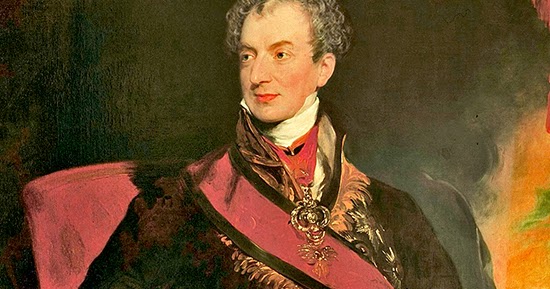The history of Austria covers the history of Austria and its predecessor states, from the early Stone Age to the present state. The name Ostarrîchi (Austria) has been in use since 996 AD when it was a margravate of the Duchy of Bavaria and from 1156 an independent duchy (later archduchy) of the Holy Roman Empire of the German Nation (Heiliges Römisches Reich 962–1806).

Austria was dominated by the House of Habsburg (Haus Österreich) from 1273 to 1806, when their empire came to an end. Austria then became the Austrian Empire, a part of the German Confederation until the Austro-Prussian War of 1866, after which Austria continued as the Austro-Hungarian Empire (1867–1918) as a dual monarchy with Hungary. When this empire collapsed in 1918, Austria was reduced to the main German speaking areas of the empire (its current frontiers), and adopted the name German Austria, since it wanted to join the new German Weimar Republic. However this union was forbidden by the Allies at the Treaty of Versailles.
Following the First Republic (1918–1933) Austrofascism tried to keep Austria independent from the German Reich, but in 1938 it was annexed by Nazi Germany with the support of the majority of the Austrian people.[1][2] After the Second World War Austria again became an independent republic as the Second Republic in 1955 and joined the European Union in 1995.
AUSTRIA IN THE MIDDLE AGES
From the 4th century BC Celtic people lived in what is now Austria. At the end of the 1st century BC the Romans conquered the region as far north as the River Danube and in 45 AD they created the province of Noricum. The Romans built towns such as Vinobona (Vienna) in Austria. They also built roads and they introduced the Roman way of life.
However from the 4th Century AD waves of tribesmen including Germans and Avars overran Austria. Then Charlemagne, King of the Franks (768-814) conquered the area and made it part of his empire. After Charlemagne’s death his empire was divided into 3 parts. Louis the German took the eastern section, which included Austria. Under Frankish rule Austria prospered.
However in the early 10th century a people called the Magyars began raiding Austria. The Magyars were utterly defeated by the German king Otto I in 955 after which the Germans regained control of the region and the Magyars became the ancestors of modern Hungarians.
In 1156 the Holy Roman Emperor made Austria a Duchy and its ruler became a Duke. Once again Austria prospered. However when a Duke of Austria died in 1246 king Ottokar of Bohemia (Czech Republic) was elected Duke and he married the last Duke’s widow.
Then in 1273 Rudolf von Habsburg became Holy Roman Emperor. He defeated the Bohemian (Czech) king and in 1282 he made his son Albert Duke of Austria. The Hapsburgs ruled Austria for centuries. Gradually they acquired more territory and they built up a great empire in Central Europe.
In 1358 Rudolph IV known as The Founder became Duke of Austria. He founded Vienna University. In 1437 Albert II Duke of Austria also became king of Hungary and Bohemia (Czech Republic). In 1438 he became Holy Roman Emperor. Austria was now the dominant power in Central Europe.
AUSTRIA 1500-1800
However in the early 16th century Austria faced a powerful threat from the Turks. In 1529 the Turks besieged Vienna but they failed to capture it.
Despite the Turks the Austrian Empire prospered during the 16th century and trade and commerce grew. (Although most of the population remained peasants).
Meanwhile all of Europe was rocked by the Reformation. A great many people in the Austrian Empire converted to Protestantism. However the Catholic Counter-reformation won some back. Furthermore Rudolf II (1576-1612) persecuted Protestants.
Later Austria was involved in the Thirty Years War (1618-1648), which caused devastation in many Hapsburg lands. Furthermore in 1683 the Turks laid siege to Vienna again. However an army of Germans and Poles relieved Vienna. Afterwards the Turks were slowly driven back.
During the 18th century Austria prospered despite several long wars. The first of these was the War of the Spanish Succession 1701-1714, which ended with Sardinia and part of Italy being added to the Austrian Empire.
More trouble brewed because Emperor Charles VI (1711-1740) did not have a male heir. He persuaded foreign powers and national assemblies within his empire to accept his daughter as the next ruler. Maria Theresa succeeded him in 1740. However Frederick the Great of Prussia promptly took Silesia and started the War of the Austrian Succession 1740-1748. During the war Maria Theresa had to fight the Prussians, French and Spanish.
In 1748 Maria Theresa’s husband Francis of Lorraine was made Emperor Francis I. When he died in 1765 she ruled with her son Joseph II (1765-1790).
At the end of the 18th century the French Revolution threw Europe into turmoil. From 1792 to 1815 Austria and France fought a series of wars.
During that period, in 1806 Napoleon dissolved the Holy Roman Empire. The ruler of Austria gave up the title Holy Roman Emperor and became Emperor Franz I of Austria.
AUSTRIA IN THE 19TH CENTURY

After Napoleon’s defeat in 1815 Klemens Metternich the Foreign Minister became the leading figure in Austrian politics. He introduced a repressive regime opposed to liberal ideas. However despite the repression the Austria prospered and by the mid-19th century industrialisation was taking place in some areas.
Yet during the 19th century nationalism was a growing force in the Austrian Empire. The various peoples such as the Hungarians and the Czechs became increasingly dissatisfied with Austrian rule.
Then in 1848 a wave of revolutions washed across Europe including the Austrian Empire. Metternich resigned and at first the Emperor made concessions. However the army remained loyal and the Emperor Ferdinand I abdicated in favour of his nephew Franz Joseph. The new emperor restored absolute rule in Austria and the old order returned.
However Austria was defeated by France in a war in 1859. She was also defeated by Prussia in 1866. After that Austria ceased to be the dominant power in Central Europe. That role passed to Prussia.
After the war, in 1867, the Austrian Empire was split into two parts. It became the Austro-Hungarian Empire consisting of Austria on one side and Hungary on the other. Both were ruled by the same Emperor.
In the late 19th century industry in the Vienna area grew rapidly. Furthermore railways were built across the empire. However the various ethnic groups in the Austro-Hungarian Empire still yearned for independence.
AUSTRIA IN THE 20TH CENTURY

Then in 1914 Archduke Ferdinand, the heir of the Austrian throne was assassinated. That event led to the First World War.
In October 1918 even before the war officially ended the Austro-Hungarian Empire began to break up as the various races declared independence. On 11 November 1918 the emperor abdicated and on 12 November the Republic of Austria was declared.
During the 1920s Austria recovered from the war but in the early 1930s like the rest of the world Austria suffered in the depression.
In July 1934 the Nazis attempted a coup and they shot the chancellor Engelbert Dolfuss. However troops defeated the coup. Yet Hitler was determined to absorb Austria. Early in 1938 Hitler forced the Austrians government to appoint Nazis to important posts. The Chancellor Shuschnigg proposed a referendum on the issue of whether Austria should join Germany. However Hitler was not satisfied and German troops massed along the border. Shuschnigg resigned and on 12 March 1938 German troops occupied Austria.
Austria suffered greatly during the Second World War. Many Austrian soldiers were killed and the country suffered from allied bombing and from a Russian invasion in 1945. However in 1943 the allies decided to restore an independent Austria after the war.
The first provisional government in Austria was formed in April 1945 then in July 1945 Austria was divided into 4 zones by the allies (USA, France, Britain and Russia). The first parliamentary elections were held in November 1945.
In 1955 Austria became an independent nation again. Parliament declared permanent neutrality. Austria joined the UN in December 1955.
The late 20th century was an era of prosperity and economic growth for Austria. Then in 1995 Austria joined the EU. Austria joined the Euro in 1999.
AUSTRIA IN THE 21ST CENTURY

Like the rest of the world Austria suffered in the recession of 2009 but it soon recovered. Today Austria is a prosperous country. Today the population of Austria is 8.2 million.












